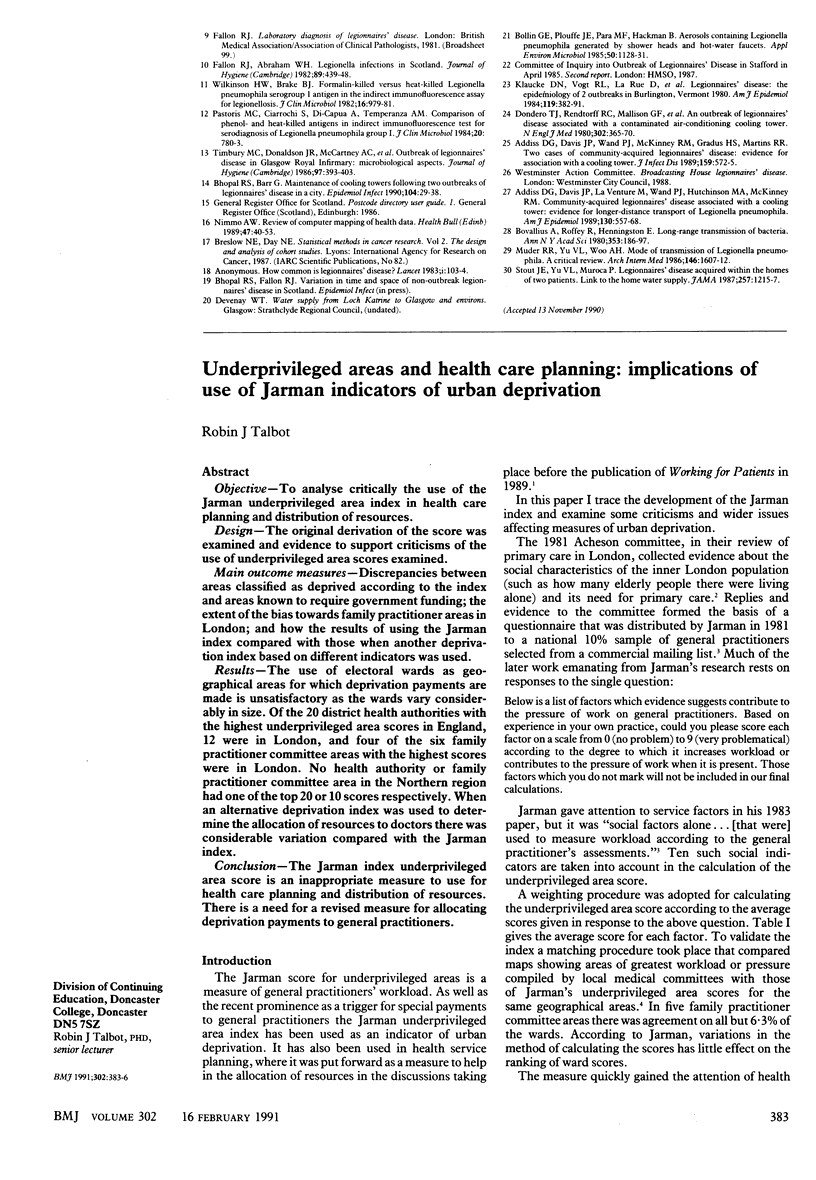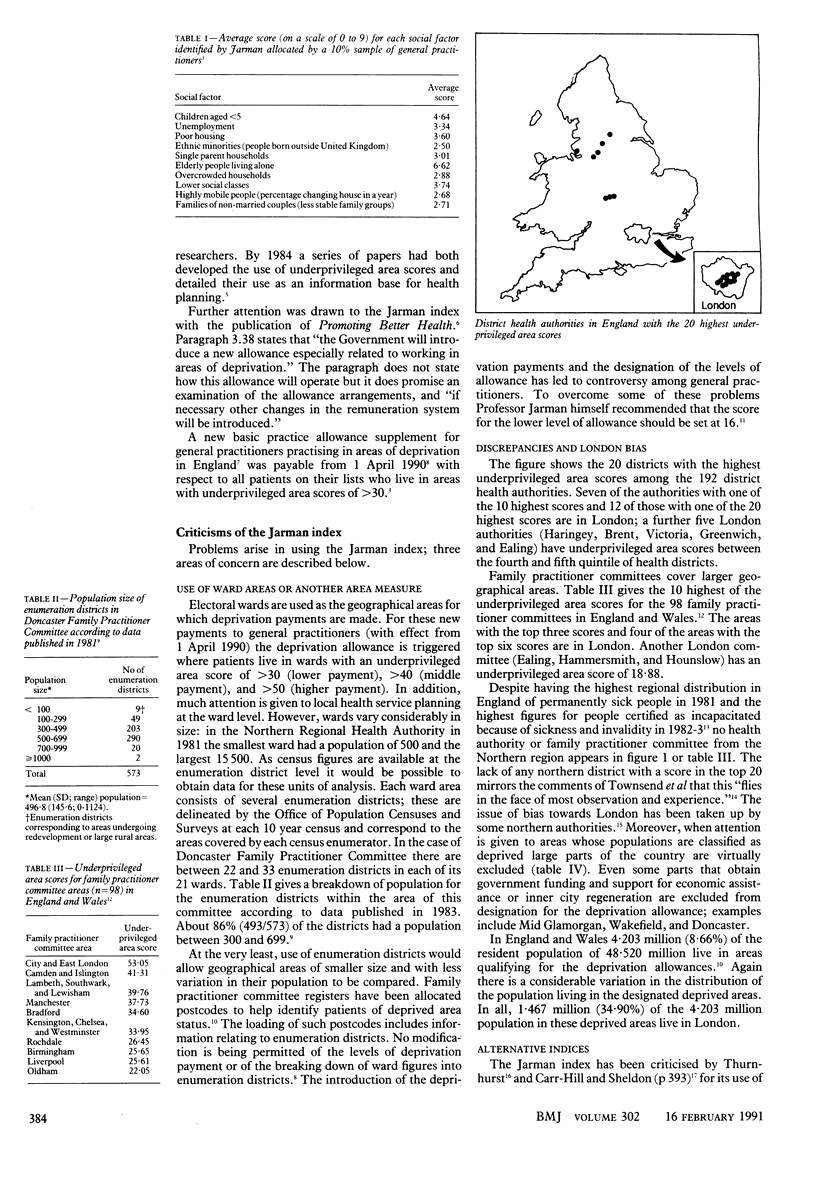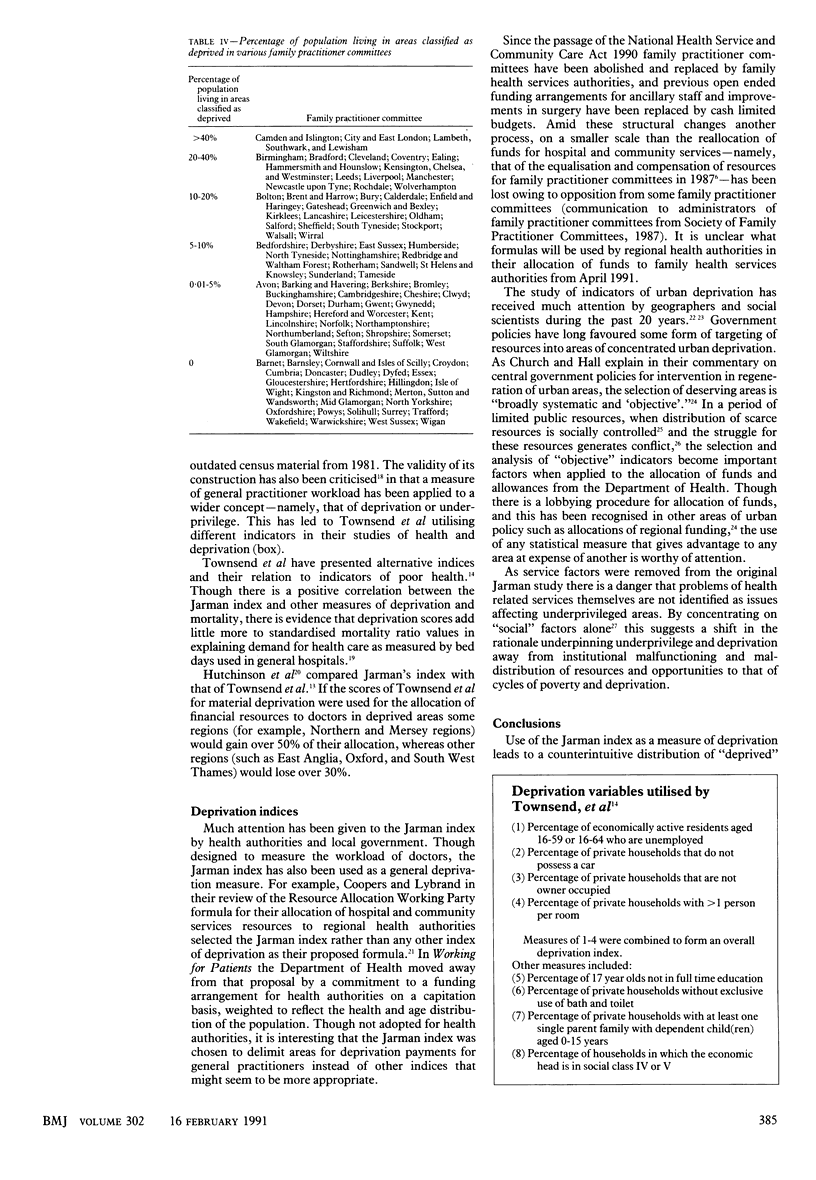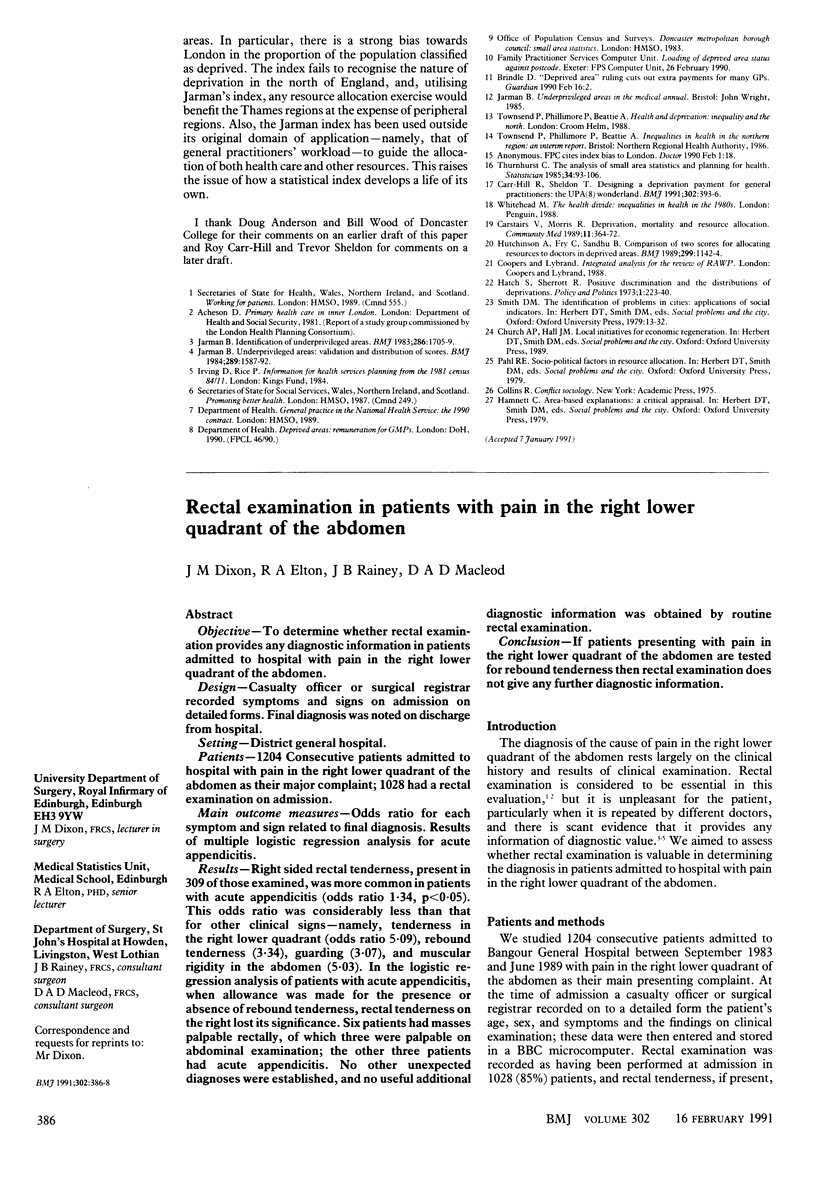Abstract
OBJECTIVE--To analyse critically the use of the Jarman underprivileged area index in health care planning and distribution of resources. DESIGN--The original derivation of the score was examined and evidence to support criticisms of the use of underprivileged area scores examined. MAIN OUTCOME MEASURES--Discrepancies between areas classified as deprived according to the index and areas known to require government funding; the extent of the bias towards family practitioner areas in London; and how the results of using the Jarman index compared with those when another deprivation index based on different indicators was used. RESULTS--The use of electroal wards as geographical areas for which deprivation payments are made is unsatisfactory as the wards vary considerably in size. Of the 20 district health authorities with the highest underprivileged area scores in England, 12 were in London, and four of the six family practitioner committee areas with the highest scores were in London. No health authority or family practitioner committee area in the Northern region had one of the top 20 or 10 scores respectively. When an alternative deprivation index was used to determine the allocation of resources to doctors there was considerable variation compared with the Jarman index. CONCLUSION--The Jarman index underprivileged area score is an inappropriate measure to use for health care planning and distribution of resources. There is a need for a revised measure for allocating deprivation payments to general practitioners.
Full text
PDF



Selected References
These references are in PubMed. This may not be the complete list of references from this article.
- Carr-Hill R. A., Sheldon T. Designing a deprivation payment for general practitioners: the UPA(8) wonderland. BMJ. 1991 Feb 16;302(6773):393–396. doi: 10.1136/bmj.302.6773.393. [DOI] [PMC free article] [PubMed] [Google Scholar]
- Carstairs V., Morris R. Deprivation, mortality and resource allocation. Community Med. 1989 Nov;11(4):364–372. [PubMed] [Google Scholar]
- Hutchinson A., Foy C., Sandhu B. Comparison of two scores for allocating resources to doctors in deprived areas. BMJ. 1989 Nov 4;299(6708):1142–1144. doi: 10.1136/bmj.299.6708.1142. [DOI] [PMC free article] [PubMed] [Google Scholar]
- Jarman B. Identification of underprivileged areas. Br Med J (Clin Res Ed) 1983 May 28;286(6379):1705–1709. doi: 10.1136/bmj.286.6379.1705. [DOI] [PMC free article] [PubMed] [Google Scholar]
- Jarman B. Underprivileged areas: validation and distribution of scores. Br Med J (Clin Res Ed) 1984 Dec 8;289(6458):1587–1592. doi: 10.1136/bmj.289.6458.1587. [DOI] [PMC free article] [PubMed] [Google Scholar]


